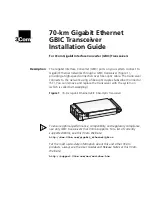
6.0 CONFIGURATION
All ADTE CH units are factory calibrated per P.O. instructions.
Usually, a complete recalibration is not required unless you
want to change input type, output type, or the range of the
unit. A calibration sticker located on the unit identifies the
model, calibration and options present. If recalibration to the
same range is required, follow section 6. 1.
For new range:
A. Open the case to gain access to the unit's pc boards.
The larger pc board is the input pcb and the smaller pc
board is the outpuVpower.
B. To determine the MAJOR RANGE setting calculate:
1. Input Span (mV) = millivolts full scale - millivolts
zero scale.
2. Input Zero (mV) = millivolts zero scale.
3. The Major range is the number from Table 1 that is
just larger (in magnitude) of the two calculations
above. Set the jumper in Table 1 to the major range
determined.
C. If the input range includes readings below 0
°
C (32
°
F)
you must set the Input Zero Control for 20 mV elevation,
otherwise set it to 0mV elevation. See Table 2 for the
jumper setting.
D. Select the TC burnout action from Table 3.
E. Select the TC type from Table 4.
6.1 CALIBRATION
To perform a calibration check or re-calibration of the instru
ment, follow this procedure.
A. Make sure the unit I / 0 wiring is properly connected
and that the correct power source per the label is also
connected. The instrument must be at normal power for
a minimum of 2 minutes before proceeding to B.
B. The input signal source must be adjustable from 0 to
100% in steps of 10% or at least 25%. The source
should be either precalibrated or an accurate meter
must be used to monitor the input. The input signal
needs to conform to an acceptable method of simulating
a thermocouple signal.
C. The output may be monitored as a current or as a
voltage across a resistor shunt, e.g. 1-5 vdc across
250 ohms.
,�,
MILLIVOLT
SOURCE
(�)
(�\
DVM
D. Apply an input corresponding to the zero input
temperature. Rotate the
FINE
ZERO control fully
counterclockwise. Rotate the
COARSE
ZERO
switch(SWI) to a position where the zero level just goes
above 4.00 ma output. Rotate the
COARSE
ZERO
switch back one number less than the previous position
(but not less than zero).
E. With the input set at the zero input, adjust the
fine
ZERO control for 4.00 ma to the desired accuracy.
F. Apply an input corresponding to the full scale input
temperature. Turn the
FINE
SPAN control fully
counterclockwise. Turn the
COURSE
SPAN
switch(SW2) to a position where the output just exceeds
20.00 ma output. Tum the switch back one number less
(but not less than 0).
G. With the input set to the full scale input, adjust the fine
span control for 20.00 ma to the desired accuracy.
H. Repeat steps E and G until the readings remain within
to desired calibration accuracy.
I. Check the instrument at the 25-50-75% input settings
minimum.
7.0 FIELD TROUBLE SHOOTING GUIDE
This section offers a simple, first level trouble-shooting aid
for an apparent instrument malfunction.
SYMPTOM
No output
CORRECTIVE ACTION
1 . Check the input and output connections
carefully.
2. Check that the power supply polarity is
correct and that the output loop power is
present on the indicated terminals.
3. Check that the input source is correct
and that it changes magnitude between
zero and full scale values when so
adjusted.
4. Make sure the output loop is complete
and that the correct meter range is
selected.
All external checks are complete. Problem
seems to be internal.
Troubleshooting beyond the above may be difficult without
special equipment. We do not recommend attempting repair
of the unit in the field. ADTECH offers a very responsive
repair policy.
□□□□□□□
� '?-
0 D
01�1
0 ©@© 0
-'
:�
SHUNT
(+) 2SO��m (-)
I
POWER
SUPPLY
....
....�--,
....
,
( :
,""·,
@
@
COPPER_/
I I
l
@1N
OUT
:�
'
0.01o/.
REF. JUNCTION
WIRE
:_ - _ ! \��f
@
(ICE BATH OR ELECTRONIC)
TC EXTENSION WIRE
Typical Test Connection
-2-
(9/96) 190-A-000077-A






















